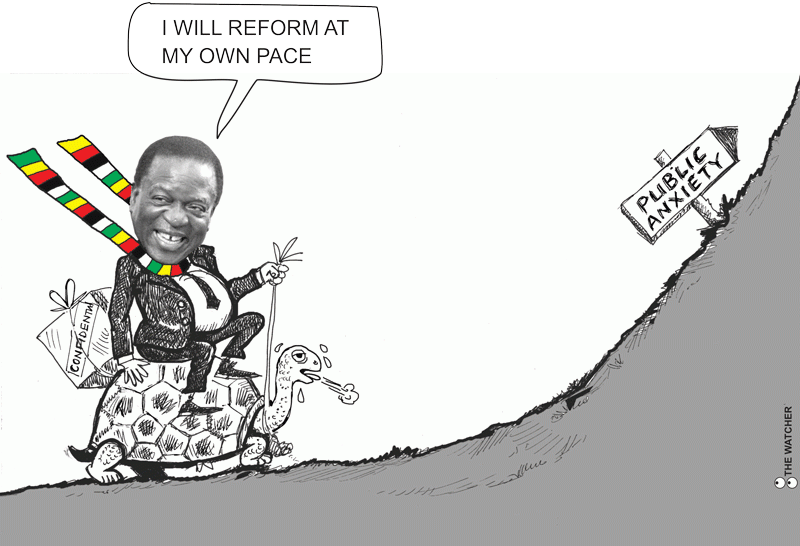
The Reserve Bank of Zimbabwe (RBZ)’s mid-term monetary policy review statement outlines ongoing efforts to manage monetary and financial conditions.
The review offers both a global and domestic economic overview, detailing inflation trends, exchange rate stability, and developments in the banking and microfinance sectors.
It also summarises policy measures such as interest rate management, statutory reserve requirements, and the Targeted Finance Facility, all aimed at achieving price stability and supporting economic growth. Furthermore, it highlights increased adoption of digital financial services, and measures to strengthen financial inclusion and credit infrastructure.
Of course, as analysts, we do not simply take these policy pronouncements at face value. They invite closer scrutiny and critical thought.
On the global stage, inflation is forecast to ease in 2025, though the pace of decline will be slower than previously expected.
In Sub-Saharan Africa, inflation is projected to remain elevated at around 13,3% in 2025. This persistence is largely attributed to ongoing fiscal deficits in the region and lower policy certainty.
Looking ahead to 2025/2026, most international commodity prices are anticipated to soften. However, gold is an exception, with prices expected to remain buoyant due to continued strong demand as a safe haven asset.
For Zimbabwe, gold production has been a bright spot. Deliveries to the Fidelity Gold Refinery (FGR) in the first half of 2025 surged by 45,85% compared to the same period in 2024, rising from 13 784,29 kg to 20 103,55 kg. This impressive growth was driven mainly by artisanal and small scale miners, whose contribution nearly doubled year-on-year.
- Rampaging inflation hits Old Mutual . . . giant slips to $9 billion loss after tax
- Monetary measures spur exchange rate stability: RBZ
- Zim deploys IMF windfall to horticulture
- Banker demands $21m from land developer
Keep Reading
Since the launch of ZiG, the RBZ’s focus has been currency stability, price stability, and maintaining a stable exchange rate. Yet, confidence in ZiG remains patchy.
The exchange rate premium has remained relatively stable, falling from 60% in March 2024 to about 30% currently.
While the governor has worked to control ZiG supply and curb inflation, the currency’s relevance appears to be diminishing. In several areas such as Kotwa, Masvingo, and Bulawayo, among others, the currency is not used, with people preferring the South African rand or other alternatives. This lack of uptake reflects a deeper issue: currency confidence is not something that can simply be legislated into existence.
The mid-term statement notes that the Financial Intelligence Unit (FIU) will tackle “currency discrimination” through fines of 1% of the transaction value or US$100 000/ZiG equivalent, whichever is greater. Foreign currency inflows rose to US$7,2 billion in the first half of 2025 from US$5,9 billion in 2024, and reserves grew from about US$285 million in April 2024 to over US$730 million by June 2025. However, these are yet to translate into a stronger exchange rate or improved fungibility of the ZiG, something worth reflecting on.
The bank policy rate has remained at 35% since September 2024. Markets view this as too high and restrictive to borrowing, but RBZ believes it will help meet its year-end inflation target of around 30%, aiming for a positive real interest rate of about 5%. Private sector credit grew by an average of 3,6% per month in the first half of 2025, translating to an annualised real growth rate of about 17%. However, foreign currency deposits still account for 72,4% of money supply as of June 2025, with ZiG’s market share showing little improvement.
ZiG inflation averaged 0,6% per month from February to July 2025, while annual inflation for July stood at 95,8% due to base effects from the October 2024 devaluation. The RBZ expects this annual inflation to decline to 30% by year end. Statutory reserves remain at 30% for demand deposits and 15% for savings or time deposits.
By June 2025, ZiG420 million (about US$14 to 15 million) had been disbursed under the Targeted Finance Facility to manufacturing (45%), agriculture (35%), and retail (17%) sectors. However, this support seems modest, and sectors such as manufacturing still face significant macroeconomic challenges, including issues with exporter payments, the retention policy, and currency fungibility.
As of June 2025, the non-performing loan ratio in the banking sector stood at 2,9%. In contrast, the microfinance sector is facing significant challenges, with 13% of loans overdue by more than 30 days, well above the 5% benchmark. These issues stem from both lending practices and borrowers’ capacity.
Additionally, some microfinance institutions charge high interest rates because many borrowers are unable to access bank funding, which further exacerbates the problem.
The microfinance sector is heavily dollarised and rapidly increasing its lending. These figures offer a clearer insight into an economy that is still predominantly informal.
The RBZ is maintaining a tight monetary policy and has confirmed that the Treasury has not borrowed from it, thereby avoiding money printing. Businesses can now pay 50/50 in quarterly payments dates using ZiG and US$, to increase ZiG demand. NDS2 will honour dollarised contracts expiring after 2030, safeguarding value.
While these are positives, building confidence across all sectors remains crucial; without it, a mono-currency by 2030 may be unrealistic. Gradual improvements in currency fungibility are expected.
Taimo is an investment analyst with a talent for writing about equities and addressing topical issues in local capital markets. He is an active member of the Investment Professionals of Zimbabwe community, pursuing the Chartered Financial Analyst charter designation.











